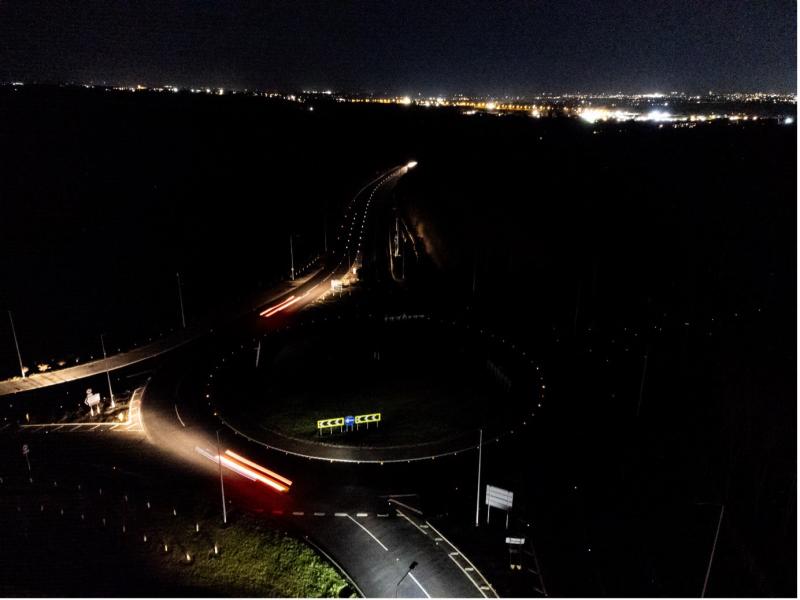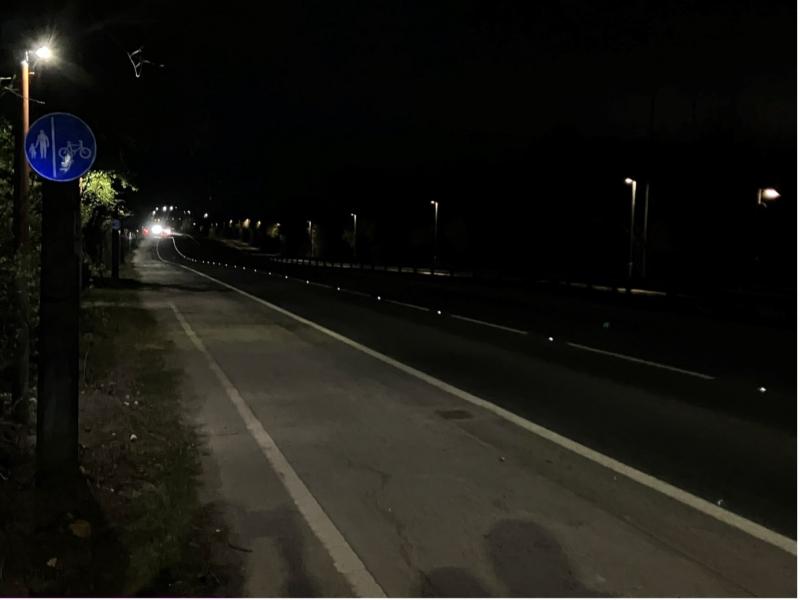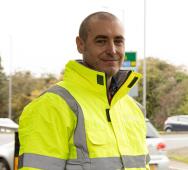Live Labs 2 blog – East Riding of Yorkshire Council’s Decarbonising Street Lighting project - progress update
This month’s blog is from Karl Rourke, one of the project leads for the East Riding of Yorkshire Council’s Decarbonising Street Lighting project.
Entering the final year
As we enter the third and final year of our project to replace street lighting with low carbon, highly visual alternatives, its time to take stock and see how far we have come in such a short period of time.
The last two years have seen intensive work undertaken by our local authority and commercial partners, including development of ground-breaking new products and systems, all driving this perception altering project. Support and visibility across our sector on a national level continues to grow and sector bodies are fully supportive of our programme as we start to look at our legacy, with commitments for ongoing awareness and training being made. We are raising the level of carbon literacy across the street lighting sector and breaking new ground in understanding what makes a safe road, rather than continuing with traditional ideas; all underpinned by our ongoing data collection.
Trial sites go ‘live’
On the 4th April 2025, two years of hard work and research came to a head when the first phase of our test sites in East Riding were made live. This meant the switching off of approximately 8km of conventional A-Road street lighting on the A164 between the Humber Bridge and Beverley and on the A1079 on the approach into Hull.
These sites incorporated three roundabouts being fully de-illuminated, plus four interlinking sections and a section of dual carriageway with an active travel route alongside.
This was only made possible by our new traffic monitoring visual based AI system running using thermal imaging, something not deployed anywhere else in the world and developed specifically for this project, with the thermal imaging giving the system the ability to essentially see in the dark.
We transitioned to real time data collection at the beginning of March 2025, giving us the confidence to go live with our first phase of test sites in the full knowledge that we would be processing real time, real world data and have the ability to respond quickly and decisively should issues present themselves. This system, coupled with the road safety risk assessment including a ten year collision review and the road safety audits undertaken on all sites meant that we had faith in our ability to de-illuminate areas such as roundabouts, nonetheless it was an exciting and daunting time for the East Riding team. I am happy to report that the transition was successful and without incident.
[Photo shows Riplingham Road Roundabout A164 pre street lighting switch off]
[Photo shows Riplingham Road Roundabout post street lighting switch off]
Year 2 comes to a successful close
In all, over the course of year two of the project we have installed over 5000 solar powered illuminated road studs, 80km of enhanced white line and over 143 square meters of class 3 (motorway grade) sign materials on our verge mounted signs.
One month after the first phase of trial sites went live, we are now undertaking a full driver behaviour data analysis and results of this will be reported on the ADEPT Live Labs 2 website when completed; however I am pleased to announce that in the first full month of de-illumination there have been no night time collisions or accident damage recorded at any of the sites, and crucially no complaints from local residents.
The initial success of the phase one test beds means we are now ready to progress to phase two sites which will be going live imminently and include multiple areas of pedestrian footway alongside the carriageway to be de-illuminated.
Lighting for the right user: Maintaining public use of the night time space
As previously mentioned, one of the phase one test sites was a section of dual carriageway with combined active travel route alongside on both sides of the carriageway. The aim of this project is not de-illumination regardless of the location, but the application of the right light in the right place. Under no circumstances do we wish to deter footway users from using the night time space, and above all we want them to feel safe when they do so.
We have a number of sites with pedestrian footway alongside the carriageway and the challenge has been to understand from a purely footway users perspective, what is good lighting? The current British Standards give some guidance, but they treat this area as an extension of the carriageway, not as a unique environment. So we have engaged with eight lighting manufacturing partners to develop pedestrian only lighting, that only lights the footway and provides a quality user experience, friend or foe recognition and fosters the feeling of safety.
Two of these pedestrian only lighting test sites were made live in the phase one roll out, with more following in the next couple of weeks.
[Photo shows pedestrian only lighting and dark carriageway on the A1079]
These test beds are monitored also by our AI system and the usage data will be evaluated to show usage trends before and after the change across all pedestrian lighting sites, along with a survey undertaken using a range of people across various demographics to obtain data from a users’ perspective of what is good lighting for pedestrians.
Understanding the benefits: How do we encourage councils’ support
As we enter our third and final year of the project, our attention now turns to our legacy post project. How do we quantify our findings, what do we leave for the sector and the country to take forward from the hard work we have put into this; in short, how do we get councils on board with our findings and encourage them to apply these to their areas.
Engaging councils has been a focus from the inception of the project. For the East Riding team there are four key factors whereby if we can show positive impacts, we can demonstrate the ‘why’ behind applying our principles on a wider scale:
- Carbon Reduction
- Road Safety/Driver Behaviour Improvements
- Financial Savings
- Biodiversity Improvement
The first two years have flown by, bringing steady progress on all four of those key factors. We have generated and published our carbon baseline, but we have not stopped there. In conjunction with Leeds University we have developed a carbon and financial decision support tool centred around our de-illumination methodology. But this tool goes much further than our baseline did.
Development of a carbon and financial decision support tool
The tool still works under the same assumptions we made in our carbon baseline, such as only measuring beyond the gate activities and working over a 40 year whole life period; however this tool factors in grid decarbonisation towards 2050 and allows for both expert users and strategic users. It allows for comparison between street lighting designs and live labs alternatives on a detailed scheme by scheme basis or on a wider strategic basis, to allow for design appraisal or writing a wider business case for larger scale lighting removal. This tool is currently in beta testing and we anticipate its completion over the summer months. The tool also compares the whole life costs of both a street lighting design and a live labs design over the whole life period using manufacturer stated refresh or replacement rates for all materials involved.
In addition, now that Spring has sprung we have deployed biodiversity monitoring across a range of locations and in a control location with no lighting changes happening, to monitor the impacts of full de-illumination and switching from standard lighting to pedestrian only lighting. This monitoring uses acoustic sensors to monitor species, numbers and activities of birds and bats and we are deploying AI based moth monitoring in the coming weeks along with measuring the changes in sky glow, particularly with the pedestrian lighting.
The roll out of our test sites does not mean we can take our foot off the accelerator pedal though. Over the coming months test sites across our partners in Aberdeenshire, Lancashire, Oxfordshire, Derbyshire and Hull will be coming on stream and adding to our data collection. We will be issuing risk liability reports and legal evaluation reports along with ongoing safety data reports as we rapidly close in on the end of the project and show that we can deliver low carbon, safe and cost effective alternatives to A Road street lighting.
Further information
- For more information on ADEPT Live Labs 2: Decarbonising Local Roads in the UK, please look at the Live Labs 2 section on the website
- For more information about the Live Labs Project, please visit the East Riding of Yorkshire Council website




